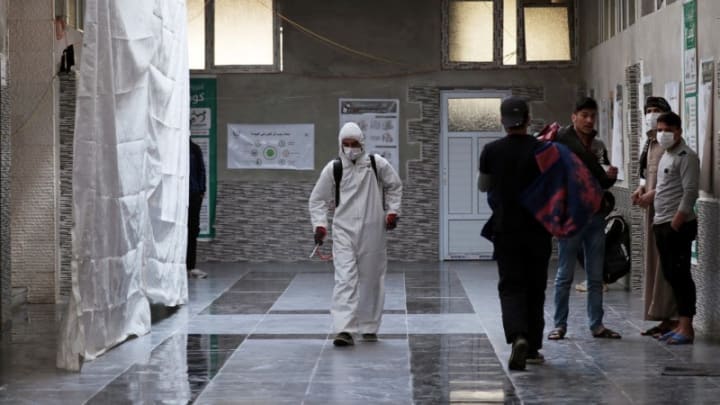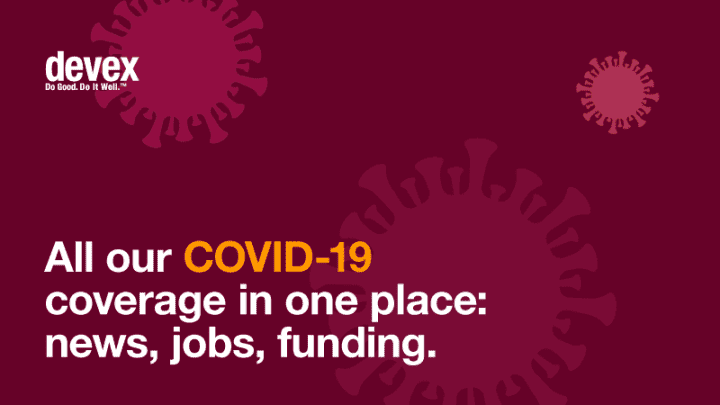
WASHINGTON — The U.S. State Department is using its internal data platform to measure the impact COVID-19 is having on conflict around the world.
New data platform allows real-time conflict analysis at US State Department
An analytics platform developed by the Bureau of Conflict and Stabilization Operations gives the U.S. State Department centralized, direct access to conflict data to assess trends and conduct regular risk assessments.
Launched by the Bureau of Conflict and Stabilization Operations in September 2019, the Instability Monitoring and Analysis Platform — or IMAP — provides centralized, real-time data on conflict indicators. Santiago Stocker, director of CSO’s Office of Advanced Analytics, said using IMAP to monitor conflict trends as the coronavirus impacts life in every country around the world is “very new territory.”
“Because there’s been so few historical pandemics like this … we have maybe two data points in the last 100 years. So there’s not a robust body of empirical work that says, ‘This is how a global pandemic affects risks of conflict,’” Stocker said. “We needed to start tracking both COVID and conflict and try to identify emerging relationships and emerging trends, acknowledging of course that every context is different.”
So far, Stocker said reports being pulled from platform’s dashboards have not indicated any global trends for how COVID-19 is affecting conflict. This can still help shape how the U.S. reacts, Stocker said.
“This pandemic really underscores the need for better data and more data that is relevant to work of U.S. foreign policy.”
— Santiago Stocker, director, CSO’s Office of Advanced Analytics“If you identify, say, a consistent pattern between COVID and increased terrorism, then that’s going to drive policy and programmatic decisions in one way. If you don’t identify that, then it’s going to drive those decisions in a different direction,” Stocker said.
However, there have been some consistent themes identified in countries where CSO has observed an uptick in conflict since the coronavirus pandemic began. Countries that are more repressive, less democratic, and less developed economically tend to be more prone to increased conflict, Stocker said. This is useful information as the department begins to prioritize action in areas where COVID-19 may be exacerbating conditions for conflict, he said.
“In particular, in places with a lot of contestation of territory and legitimacy with a lot of nonstate armed groups, there are a lot of concerns about how the redirection of government resources — particularly security force assets — towards the pandemic are potentially creating more space for these actors to operate,” Stocker said. “That’s been a particular area of concern.”
Although IMAP launched last fall, CSO is still collaborating with other bureaus and missions around the world to train them on how to use it. All 75,000 State Department employees have direct access to the web-hosted platform and can request that the Office of Advanced Analytics produce specialized reports for them.
Get development's most important headlines in your inbox every day.
Thanks for subscribing!
Rollout of the platform has been slowed by the pandemic, which moved most of the staffers at State Department headquarters to remote work and brought others back to the U.S. from their posts abroad. Stocker said he expects trainings to pick up again as the department transitions some employees back to the office.
U.S. Agency for International Development staffers do not currently have direct access to IMAP, but key information, such as conflict data, is often shared at the mission level between agencies. The goal is to expand the platform beyond the State Department within two years, but that timeline may be pushed back due to the pandemic, Stocker said.
“In times of great uncertainty, I think the demand is even higher for this type of work, so I expect that we’ll have a lot of interest,” Stocker said. “In countries where we’re seeing democratic backsliding or we’re seeing elections postponed, folks want to know: What is the impact of COVID on that, what is the potential impact ultimately on conflict and crisis?”
IMAP has helped CSO look ahead and start to anticipate some of the second-order effects that the pandemic may have, Stocker said. This includes noting places where pandemic lockdowns are causing tax revenue losses and civil service layoffs. While an economic downturn is not always a direct cause of conflict, it can be a warning sign that instability may be coming, Stocker said, and there is a higher risk of new or escalating conflict.
CSO is working to feed conflict data into IMAP more frequently to provide greater situational awareness, particularly during a rapidly evolving situation like the COVID-19 pandemic. Information is needed on a subannual, subnational level to really be effective, Stocker said.
“This pandemic really underscores the need for better data and more data that is relevant to work of U.S. foreign policy,” Stocker said. “I think that’s becoming increasingly clear to all of those who work in this field.”

Printing articles to share with others is a breach of our terms and conditions and copyright policy. Please use the sharing options on the left side of the article. Devex Pro subscribers may share up to 10 articles per month using the Pro share tool ( ).
"conflict" - Google News
July 07, 2020 at 06:14PM
https://ift.tt/3e4xdEE
US State Department connecting dots between conflict and COVID-19 - Devex
"conflict" - Google News
https://ift.tt/3bZ36xX
https://ift.tt/3aYn0I8
Bagikan Berita Ini















0 Response to "US State Department connecting dots between conflict and COVID-19 - Devex"
Post a Comment